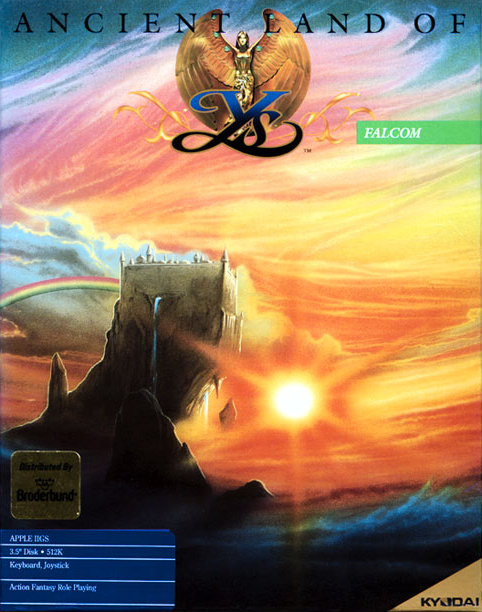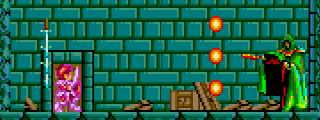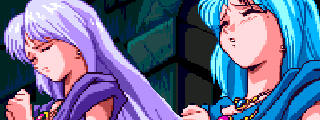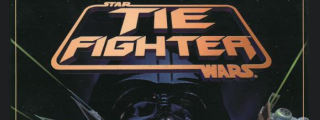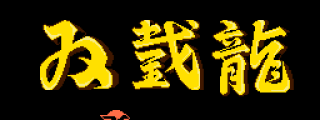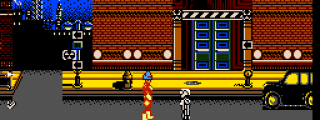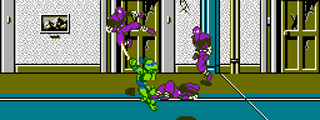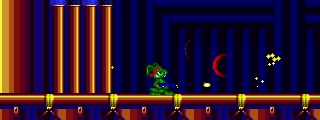Det aller første i en lang rekke spill med Adol Christin i hovedrollen, en rødhåret eventyrer som alltid klarer å ende opp på en eller annen strand med hukommelsestap...I Ys: The Vanished Omens møter Adol en spådame som sender han ut på et oppdrag for å finne de seks bøkene av Ys, som sies å huse en hemmelighet. Det tar ikke lang tid før vi finner ut at de er alle stjålet av Dark Fact og at Adol er den eneste som kan hanskes med ondskapen.
Ys introduserer spillere til en litt uortodoks måte å angripe på, sammenlignet med andre rollespill. Her "dulter man borti" fiender for å nedkjempe dem, og helst fra en skrå vinkel eller bakfra for å unngå å ta skade selv. Spillet har fått en rekke oppfølgere samt re-masters, og serien er kjent for et solid lydspor.
Published: 30.07 2018 by Coreus
Screenshots
Hailed as one of the few JRPGs that saw success outside of Japan (others include Final Fantasy and Dragon Warrior aka Dragon Quest), Ys throws away traditional turn based combat and scrolling through menus with....bumping. Yes, you read that right. Combat is done by running into monsters, but requires some precision however. Running straight into enemies will cause both parties to take damage, but run at them from a slight offset and you're good. It certainly takes some getting used to, but the result is actually very playable.
While the story won't blow you away, the graphics (for its time) might. NPCs are portrait using beautiful anime trope drawings. Ys: The Vanished Omens also features Falcom's classic soundtracks and the PC-88 version is especially haunting and mesmerizing. While it (subjectively) might look better on the Sega Master System, the soundtrack and the story it tells is what you should go for here. The game and its sequel, Ys II: Ancient Ys Vanished - The Final Chapter were remastered later for the TurboGrafx CD, in 1989. It's one of the very first game to use a CD soundtrack and it's a masterpiece to behold.
Ys: The Vanished Omens truly feels like a heartfelt gem that offers an incredible trip down memory lane that shouldn't missed by anyone even remotely interested in the genre. Just remember to play the correct version. The DOS version for example is a graphical mess with a low quality interpretation of a classic soundtrack and doesn't hold a candle to for instance to the later remasters. If you're sticking to original releases, PC-88 is highly regarded for the audio fidelity. However, the ultimate way to experience Ys is either through Ys Book I & II TurboGrafx 16 version or the much later (modern) release on Steam.
Fun fact: In terms of sheer number of game releases, Ys is second only to Final Fantasy as the largest eastern role-playing game franchise. It is particularly popular in Japan and Korea.
Ys series (3 games)
Games in this series are listed in chronological order of release (year).
Buy Ys: The Vanished Omens
Notes:
Some links may be affiliate links, in which we receive a comission without any extra cost to you. Any proceedings are used to fund The Retro Spirit - Since 1832™ project. We are not endored nor paid to link to any particular outlet. We try linking to sources that honor the developers and users alike.Contribute to Ys: The Vanished Omens
Help build the ultimate source for old games by adding new content for this game page.
Login to contribute. No account? Create one today!
Contributors gain additional site functionalities like access to extra content and much more!
